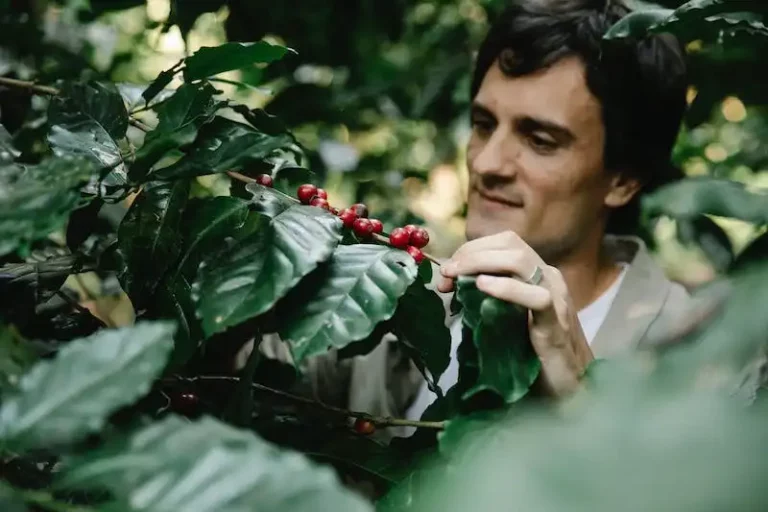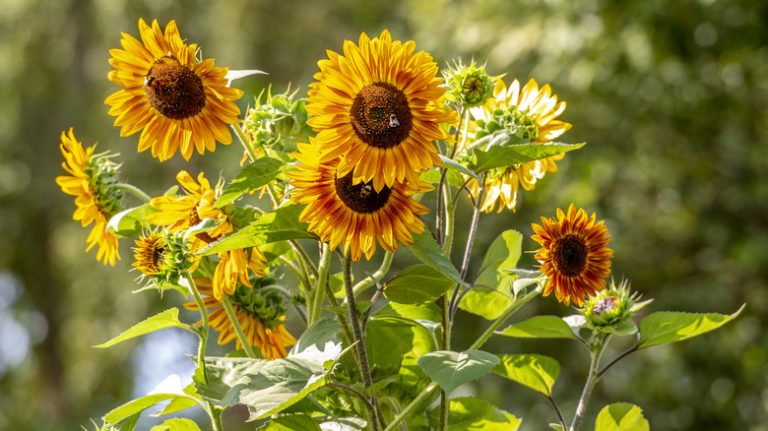Phlox flowers (Phlox subulata) are beautiful perennial flowering plants that make a great addition to any ornamental or cottage-style garden. These flowering plants grow naturally in North America through the USDA hardiness zones 2 to 9, bloom in blue, purple, red, pink, and white shades, and come in many shapes and sizes, per Almanac. Phlox flowers are known for their sweet fragrance, and they attract pollinators such as bees and butterflies to your garden.
With tall varieties perfect for cuttings and shorter, creeping varieties working wonderfully as borders or on walls, phlox flowers are a diverse group of blossoms that can add bold colors to your garden. Tall garden phlox can reach up to 5 feet tall, while the shorter creeping varieties grow a few inches tall. These flowers are simple to grow and are considered low-maintenance plants because they require little care outside of occasional watering. With their beautiful colors and sweet fragrances, phlox flowers are a favorite of gardeners everywhere.
How to use phlox flowers in your garden
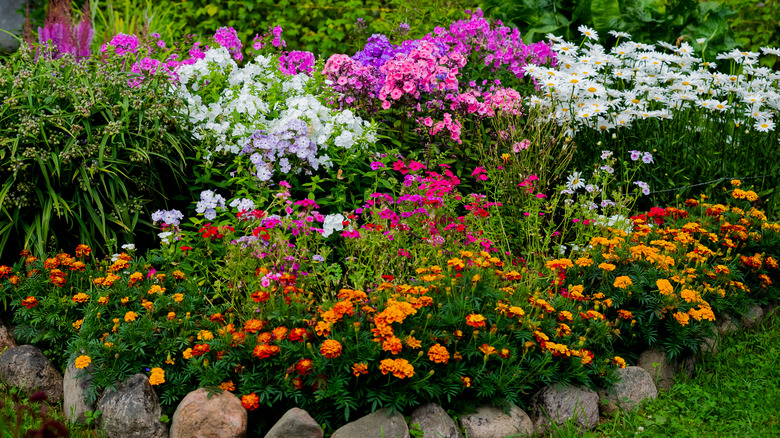
Planting phlox flowers is easy as they are usually grown from propagations or divisions rather than seeds. Gardening Know How details the steps to planting phlox flowers in the spring. First, loosen the soil about a foot deep and mix in a few inches of compost or manure. Then place your divisions or propagations into the ground, spacing them a foot or two apart. Next, refill holes with soil around the plants and water them regularly until they are established. Because there are a few different phlox flowers types, always ensure to follow the specific growing instructions for your variety.
A great way to expand your garden is to propagate your phlox flowers, explains Gardeners’ World. Divide your plants in the winter or early spring by digging them up and separating the roots. Then, take about 2-inch long cuttings of the roots from near the base of the stem and plant them in compost and soil. Ensure to water your propagations regularly, and expect them to germinate in five to 10 weeks.
How to grow phlox flowers
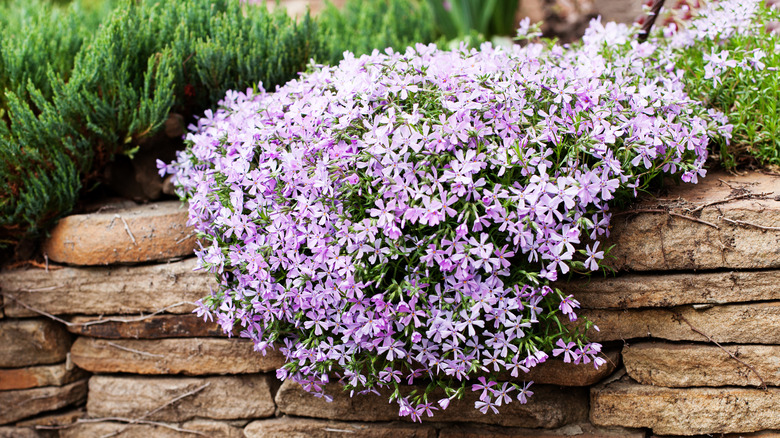
According to Gardening Know How, both garden phlox and creeping phlox are easy to care for. Most phlox variations require similar care, although it is always best to research your specific varieties’ care instructions. These plants require regular watering while they establish, but they do well with only water from rainfall after setting up. Phlox flowers need annual fertilizing, usually in the early spring with a bit of compost or slow-release fertilizer.
Deadheading and dividing are imperative when caring for phlox plants. Once flowers finish blooming and begin to wither, deadhead the flowers to make room for new flowers; per Gardening Know How, your phlox flowers will need to be divided every two to four years. You will notice that the plants produce fewer flowers during the blooming season, and that is a sign they need to be divided. To split them, simply dig them up in the spring when they begin to grow and separate the roots by hand, ensuring that each clump of roots has three active shoots. Then, replant the divisions around your garden and water them regularly until they establish.
How to care for phlox flowers
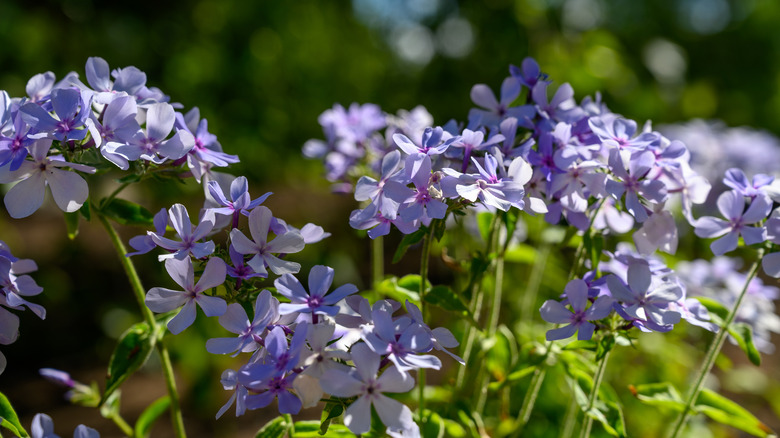
MTalvik/Shutterstock
Both garden phlox and creeping phlox are relatively low maintenance and easy to care for, according to Gardening Know How. The various varieties of phlox flowers require similar care, although it is always best to research your specific varieties’ care instructions. These plants require regular watering while they establish, but after they are established, they do well with only water from rainfall. Phlox flowers need annual feed, usually in the early spring with a bit of compost or slow-release fertilizer.
The primary care that phlox shrubs need is deadheading and dividing. Once flowers finish blooming and begin to wither, deadhead the flowers to make room for new flowers. Additionally, every two to four years, your phlox flowers will need to be divided, per Gardening Know How. You will notice that the plants produce fewer flowers during the blooming season, and that is a sign they need to be divided. To divide them, simply dig up the plants in the spring when the plant is beginning to grow and separate the roots by hand, making sure that each clump of roots has three active shoots. Then replant the divisions around your garden and water them regularly until they are established.
Varieties of phlox flowers
Nahhana/Shutterstock
There are three categories of phlox flowers: creeping phlox, woodland phlox, and tall garden phlox, explains Hallson Gardens. Creeping phlox is a low-growing variety that blooms in white, pink, and blue shades and is perfect to use as a groundcover. Some examples of creeping phlox include:
- Phlox bifida — Phlox bifida has striking white blooms with split petals.
- Phlox subulata “Candy Stripe” — These blooms have white petals with bold pink lines down the middle, making them look like candies.
Woodland phlox is a taller variety native to woodland areas in North America and is typically purple or blue. Woodland phlox varieties include:
- Phlox divaricata — These delicate light purple flowers grow naturally in woodland areas, but they are also perfect in cottage gardens.
- Phlox stolonifera — These violet-colored blooms stand out amongst the dense greenery of woodland areas.
Finally, tall garden phlox can be several feet tall with sturdy stems and a wide range of colorful petals. A few examples of tall garden phlox are:
- Phlox maculata “Natascha” — This tall version has rounded petals that are white with a bold pink stripe down the center.
- Phlox paniculata “Orange Perfection” — A version of the most popular type of tall garden phlox, ‘Orange Perfection’ has bright orange blooms.
Are phlox flowers toxic?
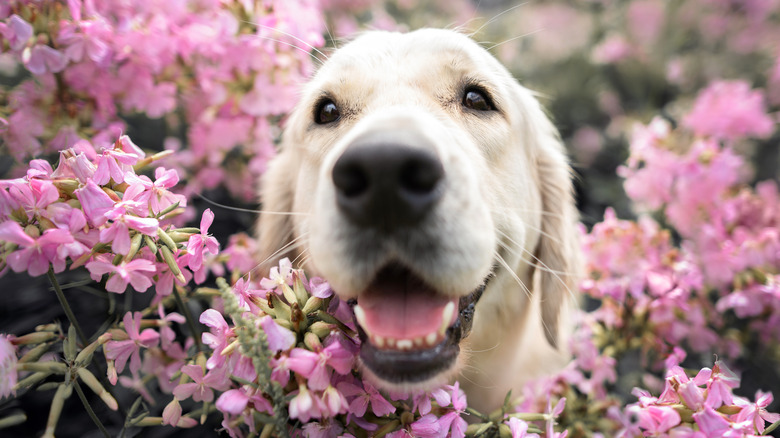
otsphoto/Shutterstock
Not only do their blooms enrich any garden, but phlox flowers, both the creeping variety and the tall garden variety, are also non-toxic for humans and pets, per Plant Addicts. Children will experience no negative or illness symptoms if they ingest small amounts of phlox flowers. Consuming a large quantity may cause an upset stomach, though, but it is not life-threatening or dangerous for humans to eat these plants.
Likewise, phlox flowers are safe for dogs, cats, and other farm animals to ingest. Your pets won’t experience any adverse symptoms from eating a few phlox flowers. However, consuming a large quantity may cause some digestional discomfort in your pet. Therefore, if you have pets who frequently eat your flowers, it is always recommended to keep an eye on them when they are in your garden and keep your phlox flowers in a place where they can’t access them.
How to repot phlox flowers
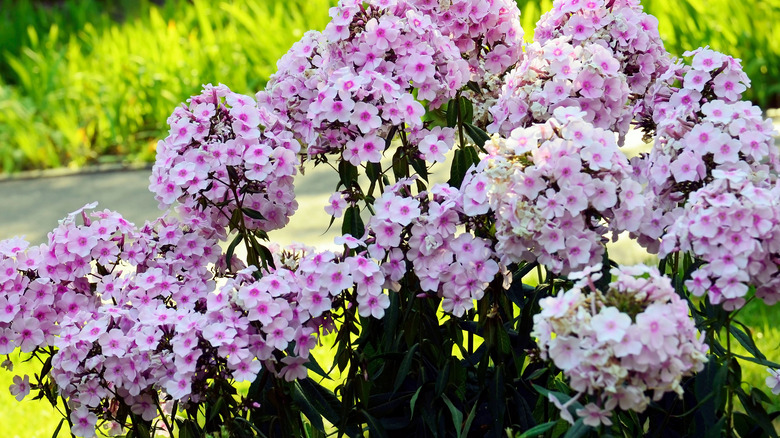
svf74/Shutterstock
Phlox flowers can grow beautifully in pots and containers around your garden, but it is essential to repot them every few years. SFGate explains how to repot your phlox flower plants: You need to first dig up the original plant. The ideal time to unearth them is right when new shoots begin to grow in the spring. As such, dig up the plant and shake the soil from the rootball before separating the roots into sections with a few shots.
Next, prepare the new site by loosening the soil 8 to 10 inches deep, digging a hole wide and deep enough for the root ball, and adding a bit of compost or manure. Place the phlox flower roots in the hole and pat the soil back around the plant. Finally, water the plant to ensure that the roots begin to establish. Your phlox flowers should bloom and grow happily in their new pot.

